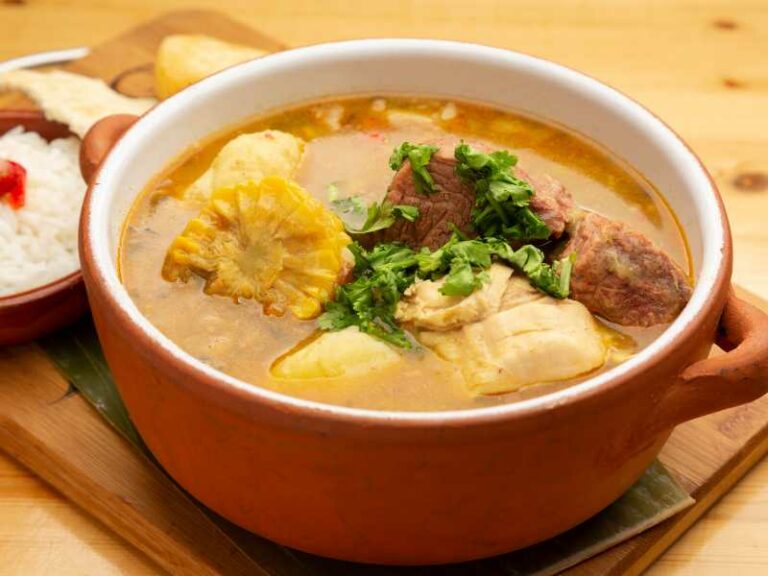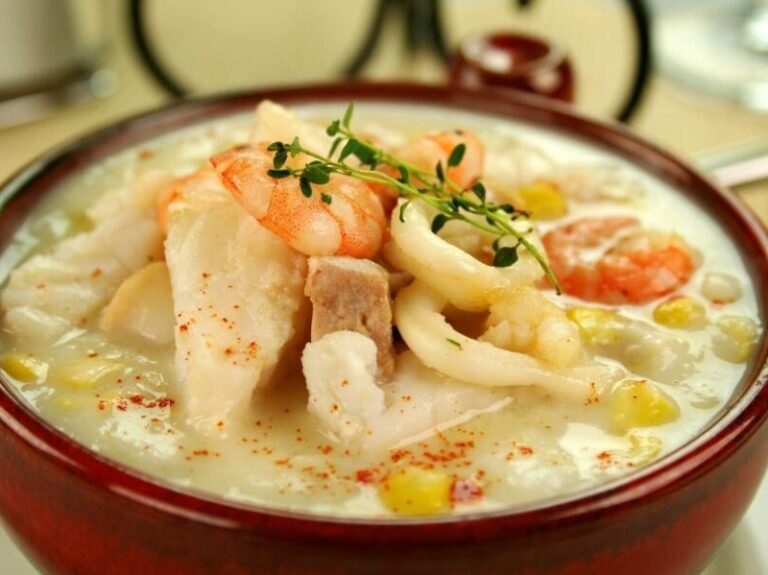Fijian Food: 11 Traditional Dishes of Fiji
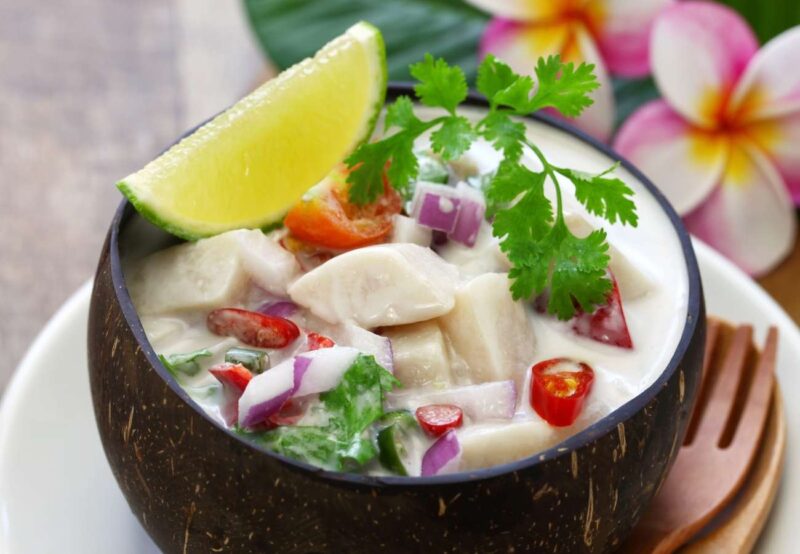
Fiji is an island country located in Melanesia, part of Oceania in the South Pacific Ocean. The country is surrounded by Vanuatu, New Caledonia, Wallis, Futuna, Samoa, Tonga, Tuvalu Kermadec Island and New Zealand. Fiji is best known for its beautiful islands, natural beauty, tropical charisma, lovely seafood and so much more.
The population of the country is mostly composed of different ethnicities, including Melanesians, Indo-Fijians, and Rotumans.
Fijian cuisine tends to utilize a combination of forage and farm-based ingredients. The country’s history as a part of the British Empire has deeply also influenced many of the country’s cooking styles.
Staples of Fijian cuisine include rice, flour, tea, bread, cereal, milk, coffee and eggs. Local ingredients include roti and curry, boiled taro and fish soup and cabin crackers with butter. Meat, including chicken and lamb is widely consumed, whilst beef and pork are reserved for special events like weddings.
Sea prawns, mussels, clams, sea urchins, sea cucumbers, oysters, lobster, fish, crabs, octopus and squid are the main sources of protein in many of the most popular dishes simply because most natives reside by the sea.
Kokoda
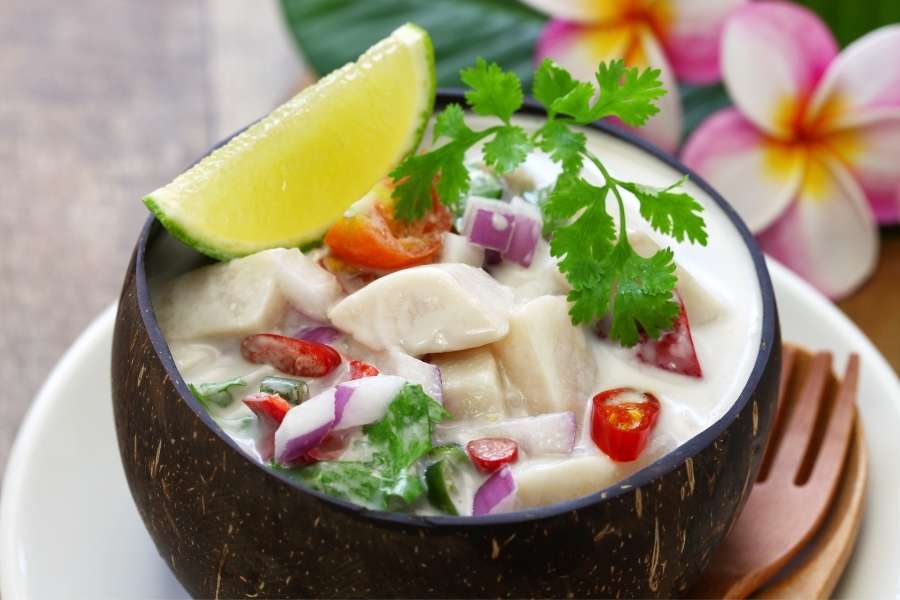
Kokoda is raw fish which is prepared by first marinating in lime and lemon juices and then cooked. Other ingredients include coconut milk, chillies, onions, tomatoes, spring onions, capsicum and seawater.
Kokoda is considered to be the national dish of Fiji and is consumed in a large clamshell, coconut shell or bamboo. Kokoda is said to be similar to the Peruvian ceviche and Hawaiian poke, except it is made richer with the inclusion of coconut milk. Generally served as a starter, the dish is available in almost every restaurant in the country.
Fish Suruwa
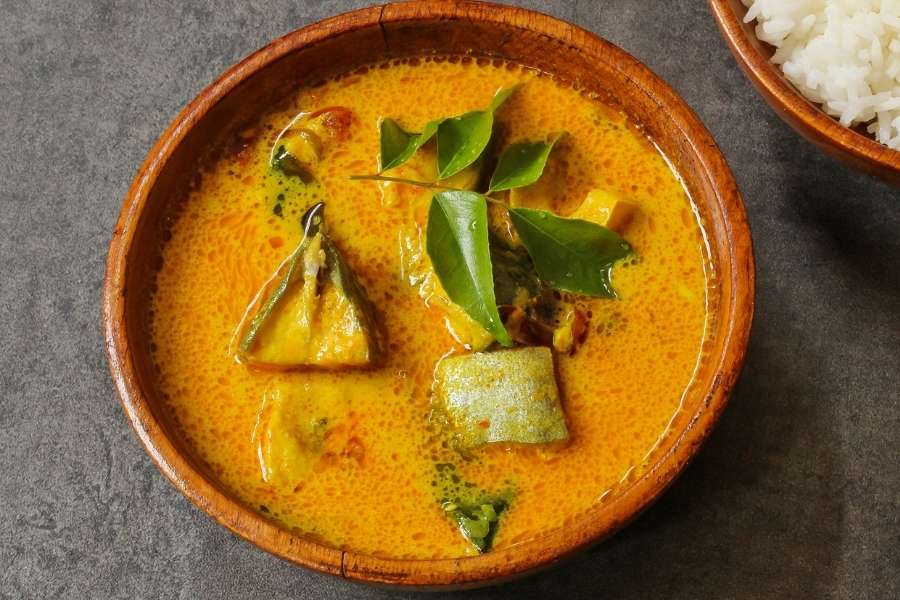
Fish Suruwa is a traditional Fijian curry prepared using fish which is cooked in coconut milk and Indian spices like cumin, turmeric and garam masala. Other ingredients include onions, chilies and tomatoes. It is generally accompanied by white rice or the Indian flatbread, roti.
Curries are believed to play a significant role in Fijian cuisine as they were introduced to the country by the Indian community, who originally came as sugarcane workers back in the 1870s. Fish suruwa is widely consumed at weddings.
Nama
Nama, commonly known as sea grapes, is a seaweed that locals prefer to consume raw. However, it is also added to dishes as a garnish. One can also include it in a salad, kora and coconut milk.
Also known as green caviar, nama has a briny flavor and is packed with vitamin C and vitamin A. Unlike Fijians, people in other countries cook it into their stews. Nama is harvested from the many shallow reefs around the islands, mainly in the Yasawas.
Palusami
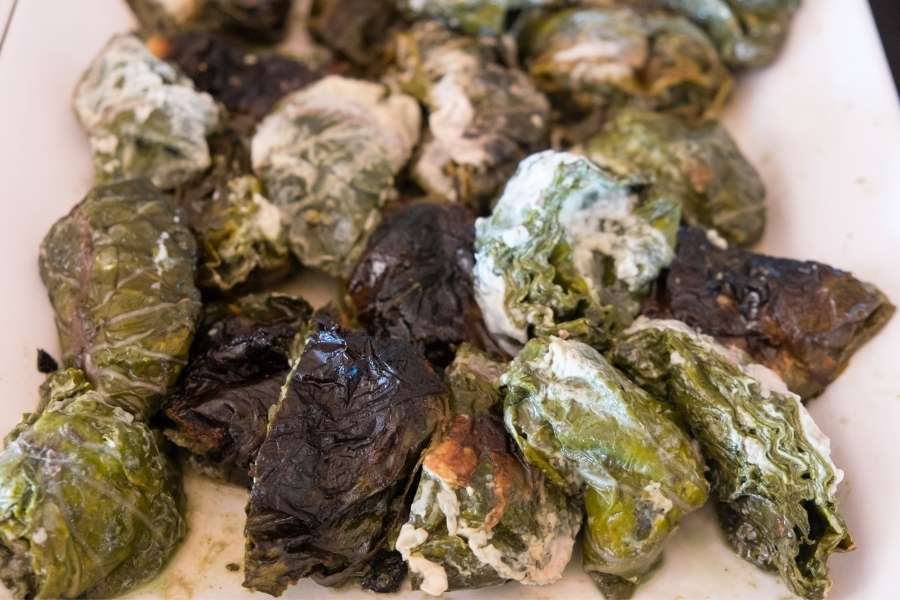
Palusami is a traditional Fijian delicacy prepared using taro leaves (also known as rourou) filled with a mixture of meat and coconut milk. It is then cooked in a lovo to achieve the most authentic flavor.
Traditionally, corned beef was added to the palusami recipe as fresh meat was difficult to find on the islands. However, people now use seafood as a substitute. Apart from Fiji, palusami is also widely enjoyed in other Pacific cuisines, including Samoa and Tuvalu.
Lovo
Lovo is a dish prepared by wrapping a variety of meats, seafood and vegetables in banana and taro leaves. They are then transferred to an underground pit lined with coconut husks and heated stones. Finally, the dish is covered in dirt and allowed to slow cook for about three hours.
In Fiji, “lovo” refers to a “feast cooked in the earth”. The dish has a special smoky flavor due to the leaves. Lovo is considered to be one of the most popular foods in Fiji, and one can find this delicacy being widely consumed during weddings and community festivals.
Sapasui
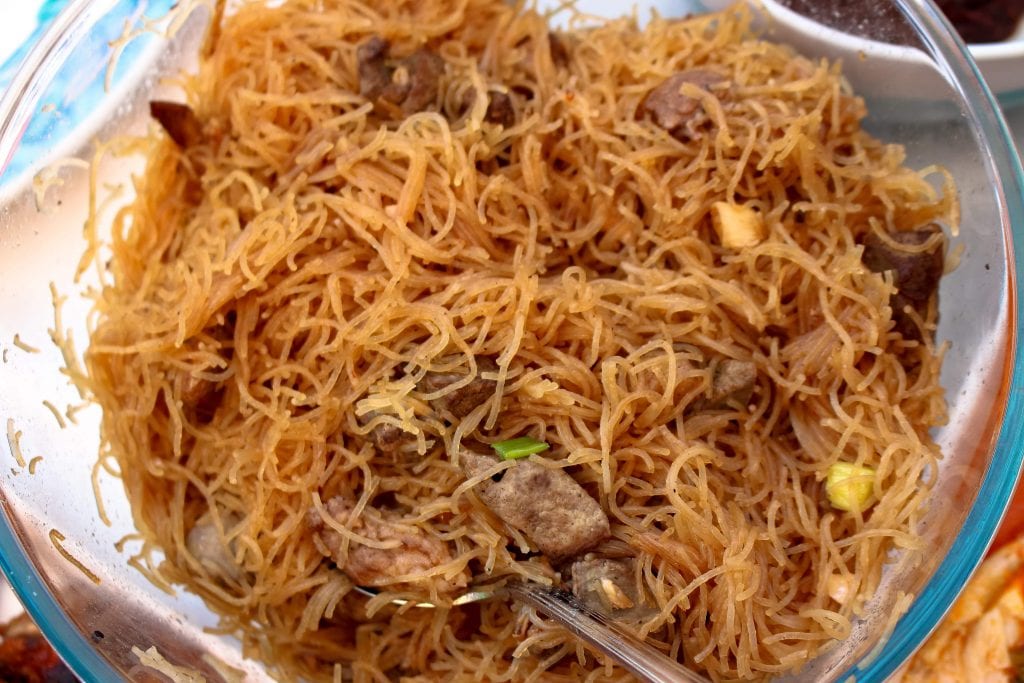
Sapasui is sometimes known as the Samoan Chop Suey but it is just as popular throughout Fiji. the dish is a quite simple noodle dish cooked with either chicken, beef or pork.
Duruka
Duruka, also known as “Fijian asparagus”, is the unopened flower of a cane shoot. The plant is considered to be similar to sugar cane, and one can easily find it all across Southeast Asia and other Pacific islands.
Fiji has both red and green types of duruka. Red duruka is hard in texture when compared to the green one, which is comparatively softer. Fijians add duruka to several different kinds of ingredients, such as coconut milk or curries.
Rourou
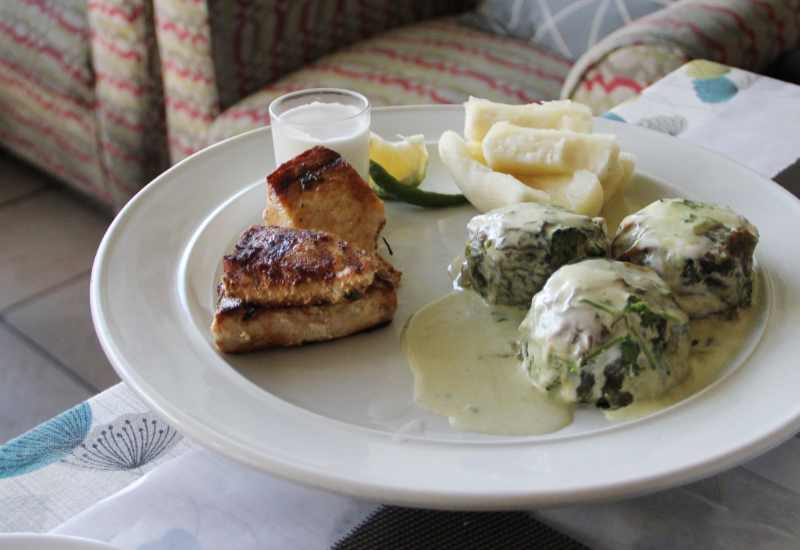
Rourou is a delicacy prepared using taro or dalo leaves stewed in coconut milk. The dish is typically creamy in consistency and its appearance is similar to spinach. Typically consumed as a starter or a side dish, it is traditionally accompanied by boiled taro roots.
Rourou can also be used to prepare Rourou Peti which is essentially rourou leaves stuffed with a combination of chili, onion, coconut milk and tuna.
Kava
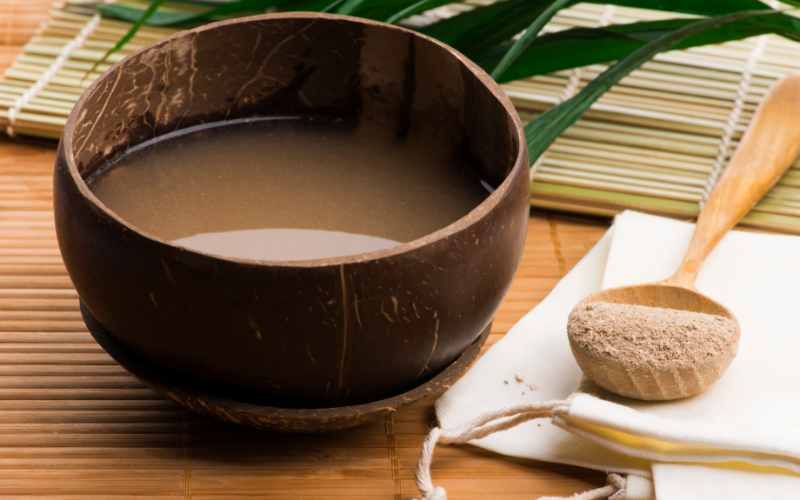
Kava, also called kava kava, is a beverage prepared using the crushed, ground, or powdered root of the kava plant which is soaked in water. Fijians drink it as tea, and Pacific Islanders have been using it for hundreds of years.
Kava is believed to act in a similar way to alcohol on one’s brain, making the person feel calm and relaxed. However, kava is also believed to have several health benefits, like relieving pain, preventing seizures and relaxing muscles.
Kava is generally consumed in traditional ceremonies and cultural events in the Pacific region. In Australia, it is limited to medicinal purposes only. As well as from Fiji, kava is also considered to be a delicacy in Tonga, Hawaii, Micronesia, Samoa and Vanuatu.
Cassava cake
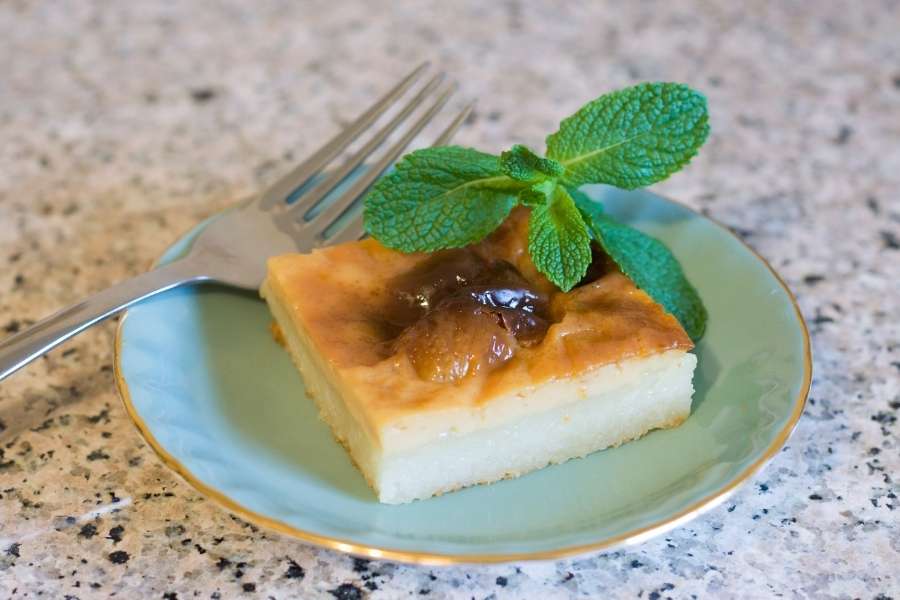
Cassava cake is a sweet, moist cake prepared using cassava, a root vegetable. Other ingredients include coconut milk, condensed milk and custard. Also referred to as tapioca or sago in several other countries of the world, cassava is believed to have a similar texture to glutinous rice.
Cassava cake is generally topped with butter, fruit preserves or fresh fruits and is a staple serving during get-togethers and special occasions.
Ika Mata
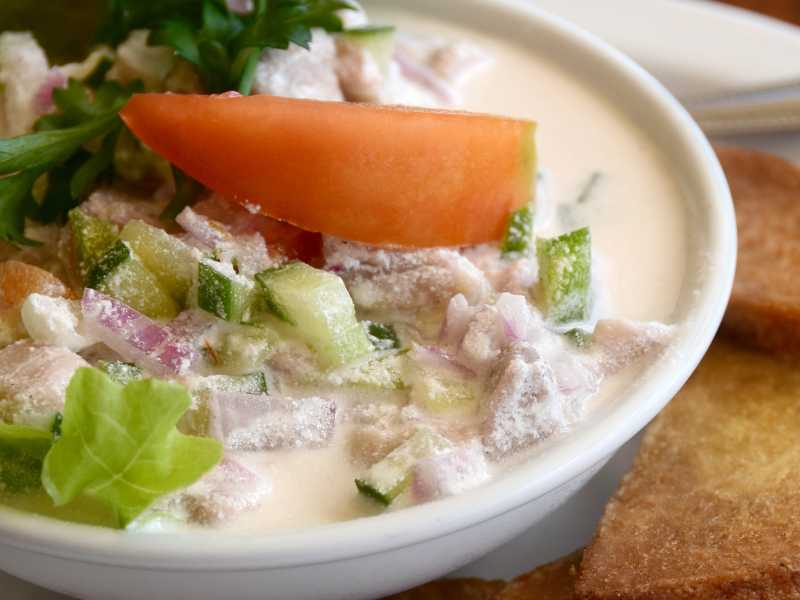
Ika mata is a traditional Polynesian dish which consists of raw fish. The fish is cut into bite sized pieces and marinated in citrus juice and salt. After marinating, the fish is tossed with vegetables and coconut cream to finish.


